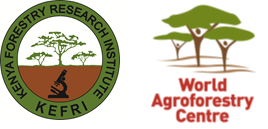- tropiTree - Tropical Tree Expressed Transcripts, SSR Markers and Primer Pairs
Samples and Analysis
Details of the methods used to sequence tree species and the background to the construction of this database are provided in the following (open access) publication that should be cited by users of tropiTree:Russell JR, Hedley PE, Cardle L, Dancey S, Morris J, Booth A, Odee D, Mwaura L, Omondi W, Angaine P, Machua J, Muchugi A, Milne I, Kindt R, Jamnadass R, Dawson IK (2014) tropiTree: an NGS-based EST-SSR resource for 24 tropical tree species. PLoS ONE, 9, e102502. doi:10.1371/journal.pone.0102502 (Link to article)
Below is a summary of the approach that was taken.
Twenty-four tropical tree species of value to small-scale farmers were chosen by the World Agroforestry Centre (ICRAF) and the Kenya Forestry Research Institute (KEFRI). The list included nine species originating in Africa, five from Asia/Oceania, one with a natural distribution spanning both Africa and Asia, and nine originally from Latin America.
Seed were transported to the James Hutton Institute where they were germinated and total RNA extracted from dissected embryonic tissue. Samples were then submitted to Glasgow Polyomics for the generation of RNAseq data. TruSeq RNA (Illumina) libraries were made using standard protocols and indexed to allow 12 libraries to be combined in a single lane of an Illumina GAII run. Paired-end 110 or 73 bp reads were obtained from two lanes in total for the 24 species.
Raw FASTQ files were quality trimmed with the CLC bio Assembly Cell and each sample de novo assembled with Trinity. SSRs were detected in Trinity consensus sequences using Phobos to search for di-, tri- and tetra-nucleotide repeats equal to or greater than 12, 15 and 16 bp in length, respectively (i.e., ≥ 6, 5 and 4 repeats of the motif, respectively). Primer3 was used to design primers around each SSR. For two of the chosen tree species, Faidherbia albida and Prunus africana, primers designed to SSRs were validated on test panels which were composed of individuals from the population from which RNA was first extracted and an additional neighbouring population.
A mean of 4,032 putative primer pairs to SSRs was designed per species. Tests of subsets of putative primers pairs on F. albida and P. africana (44 and 40 primer pairs tested, respectively) revealed 32 and 22, respectively, that amplified product of the expected size. For both species, nine of the primer sets tested resulted in larger than expected products, which may reflect intronic sequences. Of the primer sets that revealed products of the expected size, 10 and 8 revealed easily-interpretable polymorphic products for F. albida and P. africana, respectively. This indicated a successful polymorphic marker recovery rates from putative primer pairs of 23% for F. albida and 20% for P. africana.

